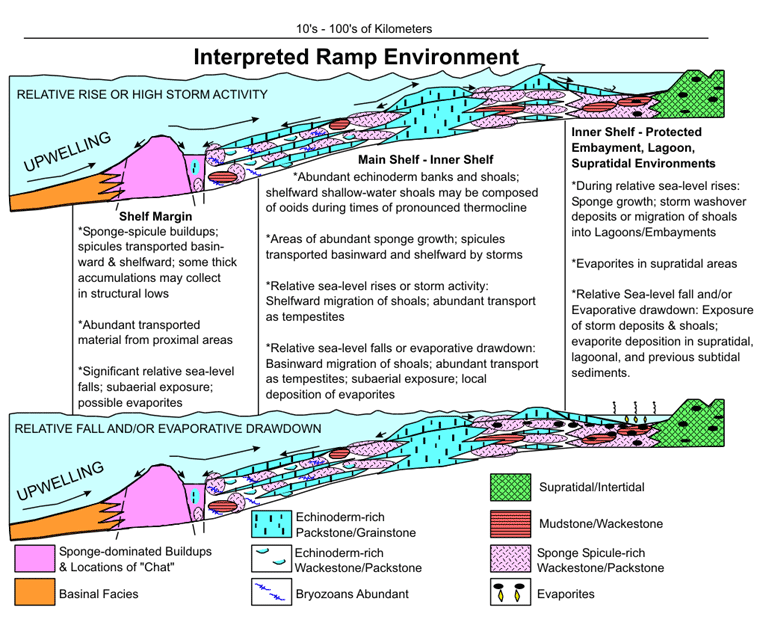Interpreted Regional Depositional Setting and Controls
Recent studies place the Kansas study area during Osagean-Meramecian time in a subtropical-tropical location, at about 20 degrees S.
A number of biotic and non-biotic associations indicate co-existence of warm and colder water. Presence of evaporites indicates arid conditions. However, the dominance of a heterozoan association (light-independent organisms such as echinoderms, siliceous sponge spicules, bryozoans) and the lack of a photozoan association (few light dependent organisms/skeletons, rare ooids and peloids) points to nutrient-rich cool water conditions.
Based on the subtropical-tropical setting and regional paleogeography, ramp characteristics during Osagean-Meramecian deposition are interpreted to result from upwelling of nutrient-rich colder waters from the Ouachita basin up onto the shelf.

|
|
e-mail : webadmin@kgs.ku.edu
Last updated May 2003
http://www.kgs.ku.edu/PRS/publication/2003/ofr2003-32/P2-02.html
